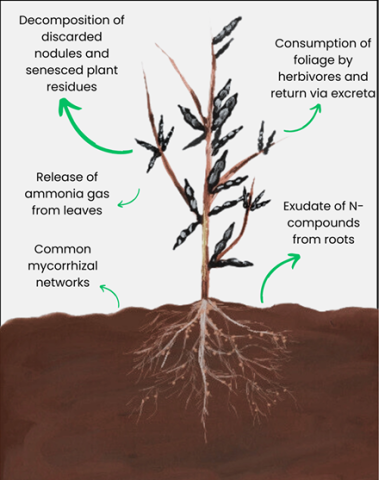Abstract
The necessity for sustainable agricultural practices has propelled a renewed interest in legumes such as faba bean (Vicia faba L.) as agents to help deliver increased diversity to cropped systems and provide an organic source of nitrogen (N). However, the increased cultivation of faba beans has proven recalcitrant worldwide as a result of low yields. So, it is hoped that increased and more stable yields would improve the commercial success of the crop and so the likelihood of cultivation. Enhancing biological N fixation (BNF) in faba beans holds promise not only to enhance and stabilize yields but also to increase residual N available to subsequent cereal crops grown on the same field. In this review, we cover recent progress in enhancing BNF in faba beans. Specifically, rhizobial inoculation and the optimization of fertilizer input and cropping systems have received the greatest attention in the literature. We also suggest directions for future research on the subject. In the short term, modification of crop management practices such as fertilizer and biochar input may offer the benefits of enhanced BNF. In the long term, natural variation in rhizobial strains and faba bean genotypes can be harnessed. Strategies must be optimized on a local scale to realize the greatest benefits. Future research must measure the most useful parameters and consider the economic cost of strategies alongside the advantages of enhanced BNF.
Jithesh T, James EK, Iannetta PPM, Howard B, Dickin E, Monaghan JM. Recent progress and potential future directions to enhance biological nitrogen fixation in faba bean (Vicia faba L.). Plant Environ Interact. 2024 May 21;5(3):e10145. doi: 10.1002/pei3.10145. PMID: 38779338; PMCID: PMC11109504.
Download the full article below.



